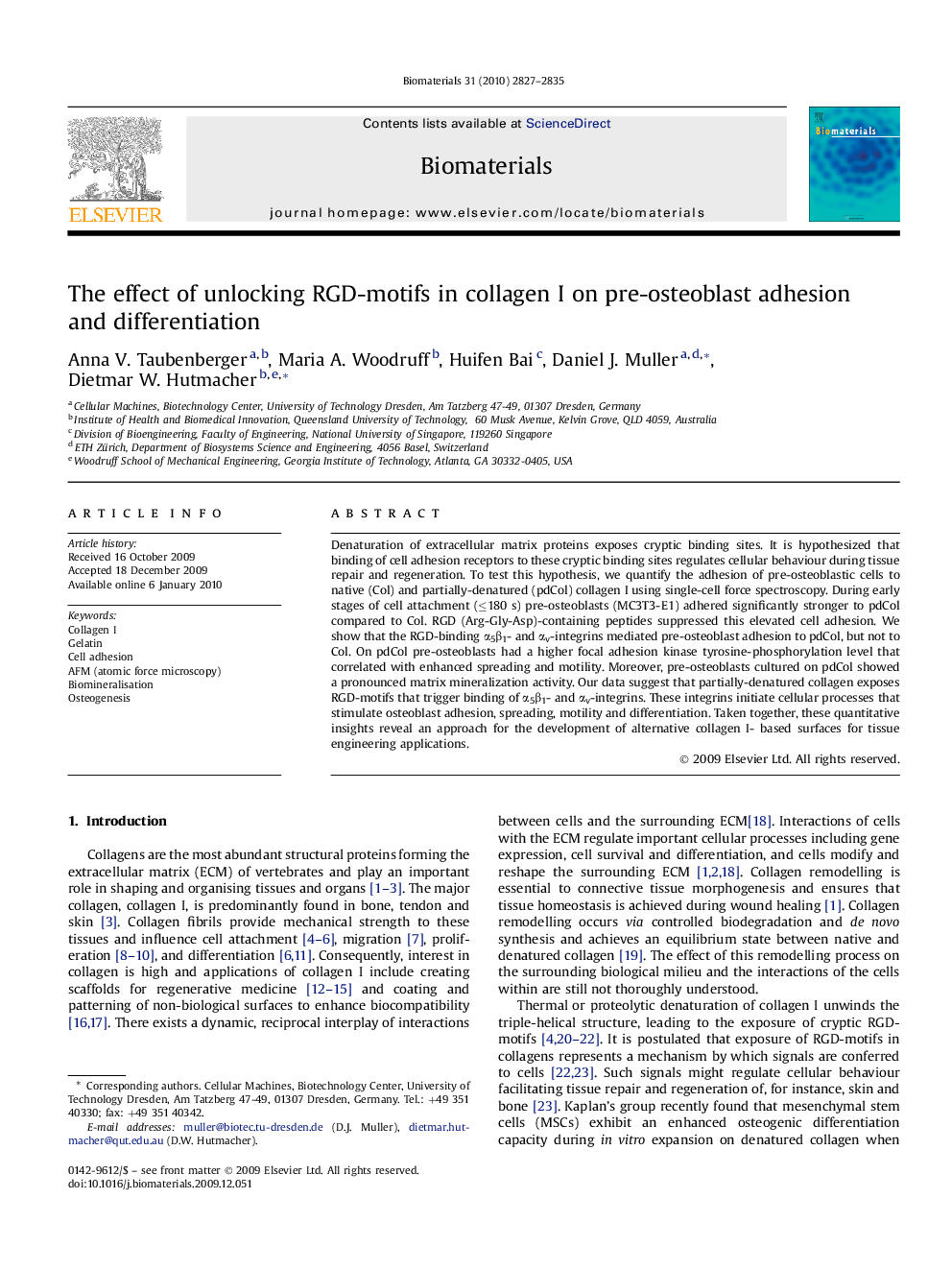| Article ID | Journal | Published Year | Pages | File Type |
|---|---|---|---|---|
| 8570 | Biomaterials | 2010 | 9 Pages |
Denaturation of extracellular matrix proteins exposes cryptic binding sites. It is hypothesized that binding of cell adhesion receptors to these cryptic binding sites regulates cellular behaviour during tissue repair and regeneration. To test this hypothesis, we quantify the adhesion of pre-osteoblastic cells to native (Col) and partially-denatured (pdCol) collagen I using single-cell force spectroscopy. During early stages of cell attachment (≤180 s) pre-osteoblasts (MC3T3-E1) adhered significantly stronger to pdCol compared to Col. RGD (Arg-Gly-Asp)-containing peptides suppressed this elevated cell adhesion. We show that the RGD-binding α5β1- and αv-integrins mediated pre-osteoblast adhesion to pdCol, but not to Col. On pdCol pre-osteoblasts had a higher focal adhesion kinase tyrosine-phosphorylation level that correlated with enhanced spreading and motility. Moreover, pre-osteoblasts cultured on pdCol showed a pronounced matrix mineralization activity. Our data suggest that partially-denatured collagen exposes RGD-motifs that trigger binding of α5β1- and αv-integrins. These integrins initiate cellular processes that stimulate osteoblast adhesion, spreading, motility and differentiation. Taken together, these quantitative insights reveal an approach for the development of alternative collagen I- based surfaces for tissue engineering applications.
